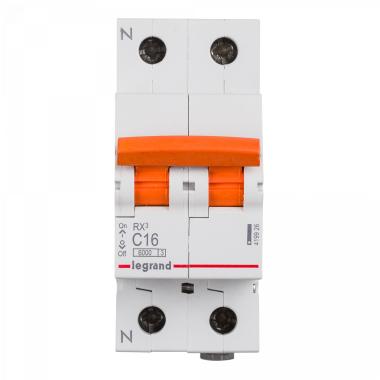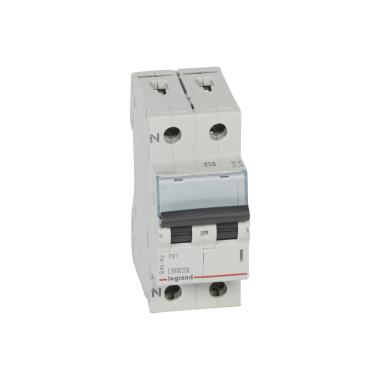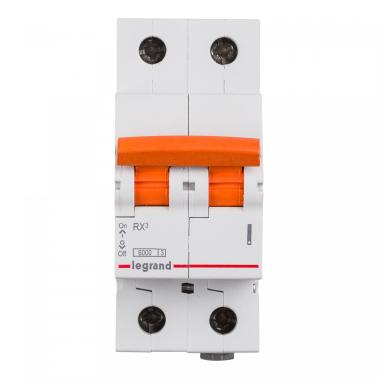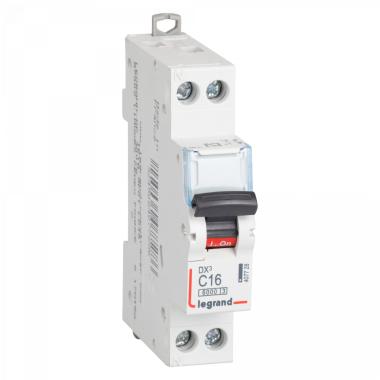Magneto-thermal Circuit Breakers
Our featured products from Magneto-thermal Circuit Breakers

4,39 €
LEGRANDRef 78889
LEGRAND 419925 1P+N 6kA 10-40 A Residential RX3 Thermal-magnetic Circuit Breaker
In Stock, delivery in 15-20 days
- Current Intensity 16 A
- Voltage Range 220-240V AC
- IP Rating IP20
6 options
12,19 €
LEGRANDRef 79738
LEGRAND 403585 Curve C 6kA 10-40 A TX3 1P+N Industrial Thermal-Magnetic Circuit Breaker
In Stock, delivery in 15-20 days
- Current Intensity 16 A
- Voltage Range 220-240V AC
- IP Rating IP20
6 options
7,79 €
LEGRANDRef 78894
LEGRAND 419934 2P 6kA 10-40 A Residential RX3 Thermal-magnetic Circuit Breaker
In Stock, delivery in 15-20 days
- Current Intensity 16 A
- IP Rating IP20
- Brand LEGRAND
6 options
24,49 €
LEGRANDRef 79782
LEGRAND 407726 Curve C 10kA 10-32 A DX3 Tertiary 1P+N Thermal-magnetic Circuit Breaker
In Stock, delivery in 15-20 days
- Current Intensity 16 A
- Voltage Range 220-240V AC
- IP Rating IP20
5 options
Brands related to this category
About Magneto-thermal Circuit Breakers
"
Circuit breakers protect against indirect contacts, they are the ones that protect the equipment connected to the installation. Depending on their location, a different nomenclature is used to name them, but they are always the same type of product:
- IGA (Automatic General Circuit Breaker) is a 32 or 40 A circuit breaker and is placed downstream (in front of) the differential switch, it protects all the circuits of the installation.
- PIA (Small Circuit Breaker) is installed downstream of the differential and each one protects a circuit of the installation.
Composition and operation of circuit-breakers
Circuit breakers consist internally of two parts, a thermal protection and a magnetic protection:
- Thermal protection: Protects against circuit overloads, the current passes through a bimetallic switch which, when heated, expands and hits the mechanism of the device to open the contact and disconnect it.
- Magnetic protection: It is in charge of protecting the circuit against short circuits, it consists of an electromagnet, it works in such a way that when a very high current circulates it generates a magnetic force, thus attracting a piece that opens the contact of the device.
Circuit breaker curves:
The circuit breaker must be duly chosen depending on its tripping curve, which depends on the number of times the In (Rated Current) is withstood, it will be used in one type of installation or another. The most common and most commonly used are:
B-curve: 3 to 5 times their In, they are used rather rarely, especially for long cabling distances.
Curve C: 5 to 10 times its In, most commonly used in the domestic environment.
Curve D: 10 to 20 times its In, mainly used for industry, where machinery is used.
What is the breaking capacity of a circuit breaker?
We call the breaking capacity of a circuit breaker the maximum current that it is capable of breaking. If the current generated by a short-circuit, for example, is higher than the breaking capacity, the circuit breaker will trip but current could continue to flow by means of an electric arc.
Possible causes for tripping the circuit breaker
By overloading: This is usually due to an excessive number of connected devices.
Short-circuit: Due to overheating of the conductors, a very high current is produced in a short period of time.
Resettable circuit breaker
This device can be automatically reset in the event of a transiently high current. If this current occurs again several times, it will open the contact and can only be reset manually.
"





